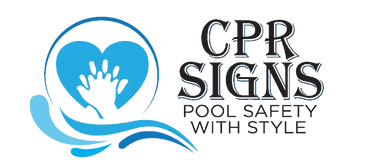Why CPR Training is Essential | Beyond Just a Sign
Aug 28, 2024
The Importance of Formal CPR Training: Why a CPR Sign Isn’t Enough
Having a CPR sign in your swimming pool area, business, or workplace is critical, but it’s only part of the equation. In a real-life emergency, simply having a sign doesn’t replace hands-on CPR training. Here’s why:
1️⃣ CPR Signs Provide Guidance, Not Experience
While CPR signs are essential tools for pool safety, they are not a substitute for proper training. A CPR sign helps bystanders remember the steps, but it doesn’t teach technique or muscle memory, which are crucial for effective resuscitation.
2️⃣ Training Prepares You for Real Emergencies
✔ In an emergency, panic can set in—people with formal CPR training react faster and with greater confidence.
✔ Training covers real-world scenarios, including assessing the situation, checking for breathing, and performing compressions effectively.
✔ Hands-on practice improves response time, increasing the chances of survival for someone experiencing cardiac arrest.
3️⃣ Signs Complement Training, Not Replace It
Even trained individuals can panic in an emergency. A properly placed CPR sign acts as a quick refresher, reinforcing what they’ve learned in CPR training courses. The best approach is a combination of formal training and clearly visible signage.
4️⃣ Workplace & Legal Compliance
✔ Many businesses, pools, and public facilities are legally required to have both CPR signage and trained first aiders on site.
✔ Australian laws mandate first aid training in certain industries, ensuring that employees are capable of performing CPR correctly.
5️⃣ Conclusion
A CPR sign is an important tool, but it’s not a substitute for formal CPR training. If you haven’t taken a CPR certification course, consider enrolling today—it could save a life.
💡 A CPR sign can guide you, but hands-on training makes the difference.

